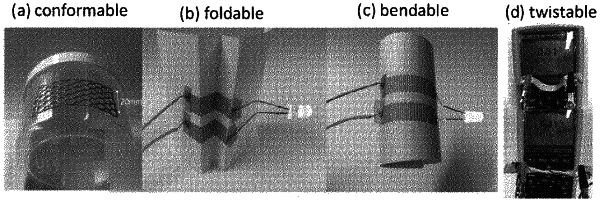| CPC C09D 11/52 (2013.01) [C09D 11/03 (2013.01); C09D 11/101 (2013.01); H01B 1/22 (2013.01)] | 12 Claims |

|
1. A highly conductive and printable ink, comprising:
(i) 5 to 40 vol % of conductive hydrophobic silver particles, with respect to the total volume of ink, as conductive solid phase,
(ii) a liquid primary phase comprising, as a polymer base, a cross-linkable hydrophobic polydimethylsiloxane (PDMS) which is capable to become an elastomer by cross-linking, and further including a cross-linker in an amount of 1 to 10 vol % and a catalyst solution in an amount of 0.01 to 5 vol %, with respect to the PDMS base, and
(iii) a liquid secondary phase based on an ionic liquid, with a volume ratio ρ of 0.01 to 0.2 between liquid secondary phase and conductive solid phase,
wherein the liquid secondary phase is immiscible with the liquid primary phase and does not wet the conductive solid phase, so that the three-phase system creates a capillary suspension.
|